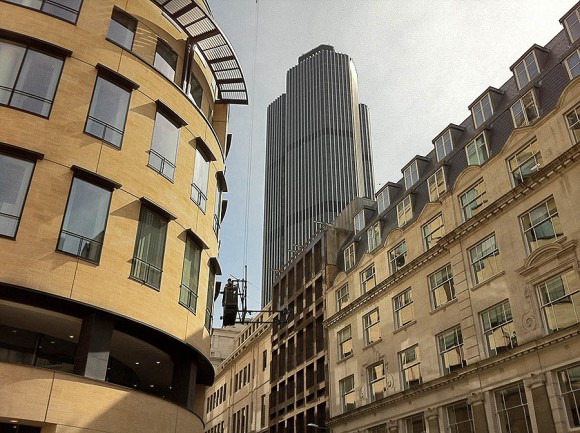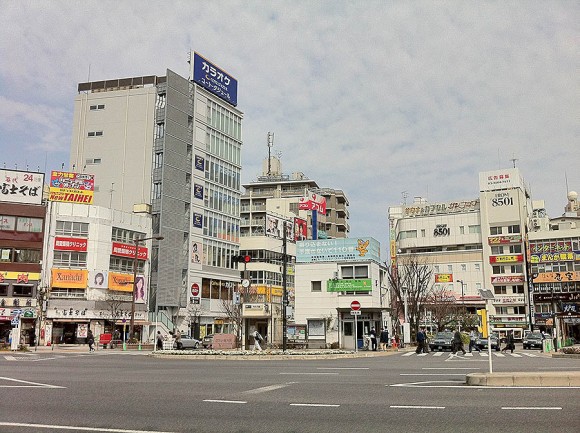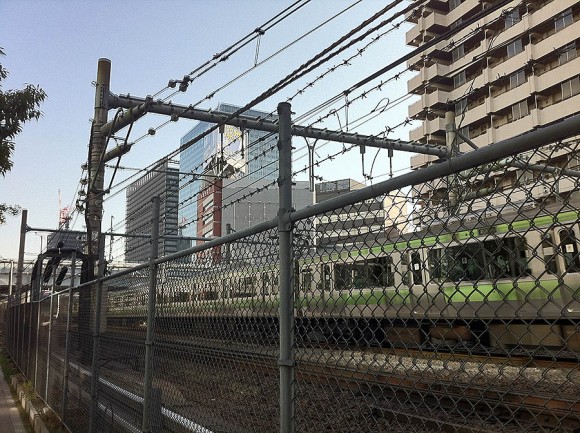I used the recent stopover in London to ride on the new Emirates Air Lines. It connects East London’s ExCel with the O2 across the Thames. On the way there I got off the DLR at Pontoon Dock to see one of the most impressive industrial ruins still on display in London: Millenium Mills (see here for the map of the walk).
London’s changing skyline
A short stopover in the UK to visit friends and family allowed for a brief walk through the ever-changing City. It’s a place familiar to me from my years of studying and working in London. A lot has changed here recently. New buildings are rising towards the sky left and right. Not in living memory has the appearance of this area changed so much in such short time.
Militärhistorisches Museum Dresden
One highlight of our recent trip to Dresden was the visit of the Militärhistorische Museum, the military history museum of the German Army, the Bundeswehr. It recently underwent a dramatic modernisation using the designs of starchitect Daniel Libeskind and re-opened its doors in 2011 amid much fanfare. The striking shard-like structure symbolises the Allied bombing squads’ formation that put to ashes large parts of Dresden in 1945.
L40 / Rosa-Luxemburg-Platz
Berlin’s Rosa-Luxemburg-Platz is one of my favourite urban spots. Here, Berlin’s history comes alive like hardly anywhere else. Buildings from several decades stand together where important historical events took place. Meanwhile, new houses are being built. Like the one in Linienstrasse 40, German architect Roger Bundschuh’s strange synthesis between art and architecture.
Danchi
A friend of a friend is a researcher on Japanese public housing projects. Their history is inextricably linked to Japan’s economic miracle from the 1950s onwards. When researching the book, I thought that the chapter on urbanisation would benefit greatly from an inset about danchi.
Pirnaischer Platz Dresden
I just got back from a short trip to Dresden. My parents treated us to the hotel, so we had to go with their choice of location in the fringes of the renovated old town. It proved to be a decent place and took us past the very interesting Pirnaischer Platz each day. Here, two buildings stood out, necessitating some further research.
Bye bye Tokyo
I left Tokyo last Sunday – in style after a night out near Shibuya got finished off by a bowl of ramen at six am, followed by one of the first Ginza line trains back to the pad. Having been “home” in Berlin for almost a week now, it’s time for an overdue farewell post to Japan.
Komazawa Olympic Park
The Tokyo Olympics 1964 have been a recurring theme on this blog (here and here) because they fit in so nicely with the narrative of Japan’s economic miracle and reintegration into the world community. Another architectural manifestation from the Games is the Komazawa Olympic Park in Setagaya. The author of the book’s chapter on politics and avantgarde has chosen the complex as one of the insets. I took a stroll through the park to get a feel for the place.
Yamanote Line walk 2/2
I walked the second leg of my Yamanote Line circle trek today. Just because the route from Sugamo back to Gotanda was a little shorter (about 18 km), Tokyo decided to throw some pouring rain down on me during the last leg from Shibuya onwards. I was wondering how it would be to walk London’s circle line (27 km) or Berlin’s Ringbahn (38 km) in comparison.
Here in Tokyo, It felt completely safe to walk everywhere, from dark back alleys to busy station surroundings. It’s exciting to hear and see how each station has a slightly different feel to it, yet shares many of the same characteristics. Rush hour pedestrian traffic at the main crossroads gives way to complete solitude a few hundred meters down the road. Trendy upmarket areas near Harajuku versus makeshift homes for the homeless near Ueno; bright and neon-lit Shibuya and Shinjuku vs. the quiet small-town feel near Tabata.
Picking up the trek at Sugamo Continue reading
Yamanote Line walk 1/2
I had always wanted to walk the Yamanote Circle Line on foot and finally got around to doing the first half today. It was a good 20 kilometer march, ten of which I walked together with a friend of mine. The JR East operated line carries about 3.7 million people each working day, more than the entire London Underground network. The circle divides the city into two – the parts that lie within and those that lie outside. Almost every station connects you with another Metro or overland rail line. Cheap (love) hotels for those who didn’t make their last train, pachinko parlours and restaurants dot the areas around the stops.









